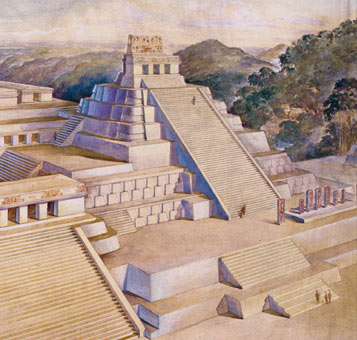Time Line of Decipherment

1958
Uncovering Maya history
Tatiana Proskouriakoff was an architect by trade, but faced with a
scarce job market during the Great Depression, the Russian-born
American took work drawing reconstructions of the ruins at Piedras
Negras, a Classic Maya site on the border between Mexico and
Guatemala (above). Later, while examining photographs of the Piedras
Negras stelae, or commemorative stone slabs, Proskouriakoff noticed
patterns in their dedication dates. The Maya would set up a series
of stelae in front of a single temple, one every five years. The
first stela in each series always showed a seated figure. Thompson
had thought these were gods, but Proskouriakoff convincingly proved
that they were kings and that the different markings on the stelae
depicted their lives from birth until death. When a ruler died, the
Maya at Piedras Negras would begin erecting stelae at another
temple, detailing the life story of another ruler. For the first
time, as Thompson and others came to agree, the glyphs were found to
tell the stories of the Maya.